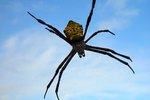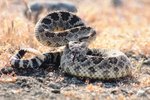
All ants bite, it’s how they eat. But it’s extremely rare for ant bites to cause problems for humans. Similarly, ant stings rarely cause problems for humans, unless the victim has an allergic reaction to the venom. A small handful of ants do sting and stings can lead to human fatalities, but they rarely act aggressively toward humans.
Habitual Biting
All ants have mandibles, or mouthparts, as they are also known. The mandible is a dual-function body part that enables the ant to carry and hold items of food and also, to bite. One unusual feature of the mandibles is that the teeth are arranged in vertical columns, rather than rows, making them analogous to a normal set of jaws rotated 180 degrees. It’s rare that an ant will bite a human, as there is little benefit to the ant in doing so.
Spraying Venom
Some ants bite, then spray venom onto the wound.This is a common behavior of the Western thatching ant (Formica obscuripes), native to the United States. But his sting is so weak that it can’t break the skin of a human.
Double Threat
On sustaining a sting from a fire ant (Solenopsis), which is an invasive species found all across the United States, it is most likely that the victim has also received a bite. This is because in order to inject his stinger, the fire ant must first get a good grip on the skin using his mandibles. Fire ants are notorious for their painful sting and for their habit of ganging up on victims. Most human fatalities occur due to anaphylaxis or to a victim receiving numerous stings from an army of ants while incapacitated. Most bites occur when a human unwittingly disturbs a fire ant mound. After a bite, a painful, localized swelling will occur within an hour. This normally abates after a couple of days, provided the victim has no underlying health issues.
Stings Losing their Effect
Harvester ants (Pogonomyrmex barbatus) bite and sting, but mainly in self-defense. However, their defense sting is becoming less and less useful, as one of their main predators, the horned lizard, is becoming tolerant to the venom. A sting from a harvester ant, found all across North America, is similar in severity and pain level to that of a bee sting. The pain and swelling will typically recede within eight hours.
Painful Welts
Ponerine ants (Hypoponera punctatissima) sting, but it’s usually their prey, such as termites, that are on the receiving end. Human victims of a ponerine ant sting will experience a painful welt and possible breathing problems if they are allergic to the venom. These ants, found globally, are considered pests and can be especially problematic when they nest under concrete.
Most Painful
According to the Schmidt Pain Index, the bullet ant (Paraponera clavata) has the most painful sting of any insect. However, the pain is temporary and the venom has no long-lasting effects on healthy humans. Bizarrely, some South American tribes use bullet ant stings as a rite of passage for young men.
References
- Arizona State University; Ask a Biologist: Face to Face with Ants
- Washington State University: Identification and Habits of Key Ant Pests in the Pacific Northwest
- Mississippi State University: Fire Ants in Mississippi
- Ant Ark: Harvester Ant
- US National Library of Medicine: Prey Capture Behavior in an Arboreal African Ponerine Ant
- Mother Nature Network: 10 Creatures that Deliver the Most Painful Stings and Bite
Photo Credits
-
Jupiterimages/Photos.com/Getty Images
Writer Bio
Simon Foden has been a freelance writer and editor since 1999. He began his writing career after graduating with a Bachelors of Arts degree in music from Salford University. He has contributed to and written for various magazines including "K9 Magazine" and "Pet Friendly Magazine." He has also written for Dogmagazine.net.




